Your cart is currently empty!
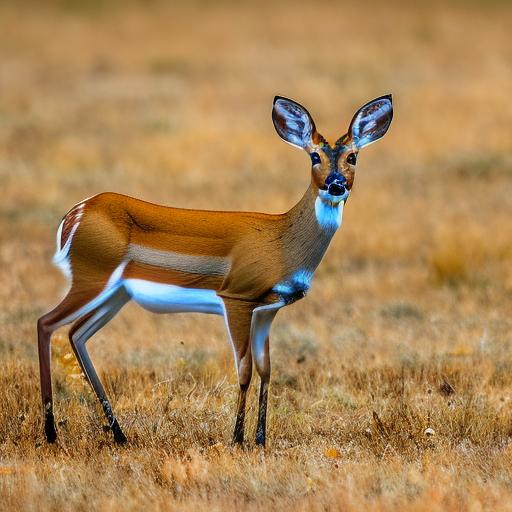
mule deer antelope combo hunts

Mule Deer Antelope Combo Hunts have become increasingly popular among hunters in recent years. This type of hunt allows hunters to pursue both mule deer and antelope in the same trip, maximizing their chances of success and providing a diverse hunting experience. The combination of these two species offers a unique challenge and excitement for hunters, making it an attractive option for those looking for a thrilling adventure.
The appeal of a Mule Deer Antelope Combo Hunt lies in the opportunity to target two different species in one trip. Mule deer are known for their elusive nature and impressive antlers, while antelope are known for their speed and keen senses. Hunting both of these animals requires different strategies and skills, making it a rewarding and challenging experience for hunters. Additionally, the chance to harvest two different animals in one trip adds to the excitement and satisfaction of the hunt.
Key Takeaways
- Mule deer antelope combo hunts offer a unique and exciting hunting experience.
- Understanding the habitat and behavior of mule deer and antelope is crucial for a successful hunt.
- Planning ahead and choosing the right gear and equipment can make all the difference.
- Safety should always be a top priority on any hunting trip.
- Trophy hunting should be done responsibly and with consideration for conservation efforts.
Understanding the Habitat of Mule Deer and Antelope
To have a successful Mule Deer Antelope Combo Hunt, it is important to understand the habitat of both mule deer and antelope. Mule deer are typically found in mountainous regions with dense vegetation, such as forests and brushy areas. They prefer areas with good cover and access to water sources. On the other hand, antelope are found in open grasslands and prairies, where they can use their speed to escape predators.
When scouting for mule deer, look for tracks and signs such as hoof prints, droppings, and rubs on trees. Mule deer tracks are larger than those of antelope and have a distinct shape with two pointed ends at the front. Antelope tracks are smaller and more rounded. Look for antelope tracks in open areas with short grasses.
Planning Your Mule Deer Antelope Combo Hunt: Tips and Tricks
1. Researching the best hunting locations: Before embarking on a Mule Deer Antelope Combo Hunt, it is important to research the best hunting locations. Look for areas with healthy populations of both mule deer and antelope, as well as good access to public lands. Online forums, hunting magazines, and local hunting organizations can provide valuable information on the best hunting spots.
2. Choosing the right outfitter: If you are not familiar with the area or do not have the necessary equipment, hiring an outfitter can greatly enhance your hunting experience. Look for outfitters with a good reputation and experience in guiding Mule Deer Antelope Combo Hunts. They will have the knowledge and resources to ensure a successful hunt.
3. Preparing physically and mentally for the hunt: Mule Deer Antelope Combo Hunts can be physically demanding, so it is important to prepare yourself physically before the hunt. Engage in regular exercise and practice shooting to improve your accuracy. Additionally, mental preparation is crucial for a successful hunt. Familiarize yourself with the behavior and habits of mule deer and antelope, and practice patience and persistence.
What to Expect on a Mule Deer Antelope Combo Hunt
A day in the life of a hunter on a Mule Deer Antelope Combo Hunt typically starts early in the morning before sunrise. Hunters will head out to their designated hunting areas and begin scouting for signs of mule deer and antelope. This may involve glassing open areas with binoculars or spotting scopes, looking for movement or feeding patterns.
Once a suitable target is identified, hunters will begin their stalk. This may involve crawling through brush or using natural terrain features for cover. The goal is to get within shooting range without alerting the animals. Once in position, hunters will take their shot using either a bow or rifle, depending on their preference and skill level.
The challenges of a Mule Deer Antelope Combo Hunt lie in the elusive nature of both mule deer and antelope. These animals have keen senses and are constantly on alert for predators. Additionally, the terrain and weather conditions can pose challenges for hunters. However, the rewards of a successful hunt, such as harvesting a trophy animal and the sense of accomplishment, make it all worthwhile.
The Best Time of Year for Mule Deer Antelope Combo Hunts
The best time of year for Mule Deer Antelope Combo Hunts depends on the hunting seasons for mule deer and antelope in your specific area. In general, mule deer hunting seasons occur in the fall, while antelope hunting seasons occur in late summer or early fall.
The pros of hunting mule deer in the fall include the rutting season, when bucks are more active and visible during daylight hours. This can increase your chances of encountering a trophy animal. Additionally, the cooler temperatures in the fall make it more comfortable for hunters to spend long hours in the field.
On the other hand, hunting antelope in late summer or early fall allows hunters to target animals during their rutting season as well. During this time, bucks are more active and vocal, making them easier to locate. Additionally, antelope hunting seasons often coincide with milder weather conditions, which can make for a more enjoyable hunting experience.
Choosing the Right Gear and Equipment for Your Hunt
When preparing for a Mule Deer Antelope Combo Hunt, it is important to have the right gear and equipment. Here are some essential items to consider:
1. Firearms: If you choose to hunt with a rifle, make sure you have a reliable and accurate firearm that is appropriate for both mule deer and antelope. Choose a caliber that is suitable for both species and practice shooting at various distances to ensure accuracy.
2. Archery equipment: If you prefer bow hunting, make sure you have a compound bow or recurve bow that is suitable for both mule deer and antelope. Practice shooting from different positions and distances to improve your accuracy.
3. Optics: Good quality binoculars and a spotting scope are essential for spotting and identifying mule deer and antelope from a distance. Look for optics with good magnification and clarity.
4. Clothing: Dress in layers to accommodate changing weather conditions. Choose clothing that is quiet, scent-free, and blends in with the natural surroundings. Additionally, invest in a good pair of hunting boots that provide comfort and support for long hours of walking and stalking.
5. Backpack: A backpack is essential for carrying your gear, water, food, and other essentials. Look for a backpack with multiple compartments and a comfortable harness system.
When packing for your hunt, be sure to pack efficiently to minimize weight and bulk. Consider the duration of your hunt and pack enough food, water, and other essentials to last the entire trip. Additionally, make sure to pack any necessary licenses, tags, and permits.
Hunting Techniques for Mule Deer and Antelope
1. Spot and stalk hunting: Spot and stalk hunting is a common technique used for both mule deer and antelope. This involves glassing open areas from a distance to locate animals, then stalking within shooting range without being detected. Use natural terrain features for cover and move slowly and quietly to avoid alerting the animals.
2. Calling techniques: Calling can be effective for both mule deer and antelope during their rutting seasons. For mule deer, use grunt calls or rattling antlers to imitate the sounds of competing bucks. For antelope, use a bleat call or a decoy to attract bucks during their rutting season.
3. Bow hunting vs. rifle hunting: The choice between bow hunting and rifle hunting depends on personal preference and skill level. Bow hunting requires more skill and patience, as it requires getting within close range of the animal. Rifle hunting allows for longer range shots and can be more effective for hunters with less experience.
The Importance of Safety on Mule Deer Antelope Combo Hunts
Safety should always be a top priority on any hunting trip, including Mule Deer Antelope Combo Hunts. Here are some safety tips to keep in mind:
1. Familiarize yourself with the hunting regulations and laws in your area. This includes knowing the bag limits, hunting seasons, and any specific rules or restrictions.
2. Always let someone know your hunting plans, including your expected return time and the location you will be hunting in. This ensures that someone knows where to look for you in case of an emergency.
3. Carry a first aid kit and know how to use it. Accidents can happen in the field, so it is important to be prepared to handle minor injuries or emergencies.
4. Practice firearm safety at all times. Treat every firearm as if it is loaded, keep your finger off the trigger until ready to shoot, and always be aware of your target and what is beyond it.
5. Be aware of your surroundings and watch for other hunters in the area. Communicate with other hunters to avoid any potential accidents or conflicts.
Trophy Hunting: What to Look for in a Mule Deer or Antelope
Trophy hunting is a controversial topic, but for those who choose to participate, it is important to understand what makes a trophy animal. In the case of mule deer, trophy animals are typically identified by their antler size and symmetry. Look for bucks with large antlers that have multiple points and good mass.
For antelope, trophy animals are typically identified by their horn length and prong length. Look for bucks with long horns that have good prong length and symmetry.
It is important to note that trophy hunting should be done ethically and responsibly. Hunters should always follow local hunting regulations and harvest animals in a sustainable manner. Additionally, trophy hunting should not be the sole focus of a hunt, but rather a byproduct of the overall hunting experience.
Conservation Efforts for Mule Deer and Antelope Populations
Conservation efforts are crucial for maintaining healthy populations of mule deer and antelope. Hunters can contribute to these efforts in several ways:
1. Purchase hunting licenses and tags: The fees from hunting licenses and tags go towards conservation efforts, including habitat restoration, research, and population management.
2. Practice ethical hunting: Hunters should always follow hunting regulations and harvest animals in a sustainable manner. This includes targeting mature animals, avoiding over-harvesting, and respecting bag limits.
3. Support conservation organizations: There are many organizations dedicated to conserving mule deer and antelope populations. Consider joining or supporting these organizations through donations or volunteer work.
4. Participate in habitat restoration projects: Many conservation organizations organize habitat restoration projects, such as planting native vegetation or removing invasive species. Participating in these projects can help improve the habitat for mule deer and antelope.
Mule Deer Antelope Combo Hunts offer a unique and thrilling hunting experience for those looking to target two different species in one trip. Understanding the habitat of mule deer and antelope, planning your hunt effectively, and choosing the right gear and equipment are all important factors for a successful hunt. Additionally, practicing ethical hunting and supporting conservation efforts are crucial for maintaining healthy populations of these species. So, if you’re up for a challenge and want to experience the excitement of pursuing both mule deer and antelope, consider embarking on a Mule Deer Antelope Combo Hunt.
If you’re interested in mule deer antelope combo hunts, you might also want to check out this informative article on hunting rabbits without a gun. It provides valuable insights and techniques for those who prefer a different kind of hunting experience. Whether you’re looking to diversify your hunting skills or simply enjoy the thrill of a new challenge, this article offers practical tips and advice. To learn more, click here: Hunting Rabbits Without a Gun.
FAQs
What is a mule deer antelope combo hunt?
A mule deer antelope combo hunt is a type of hunting trip where hunters can pursue both mule deer and antelope in the same area during the same hunting season.
Where can I go on a mule deer antelope combo hunt?
Mule deer antelope combo hunts are typically offered in western states such as Wyoming, Montana, and Colorado.
What is the hunting season for mule deer and antelope?
The hunting season for mule deer and antelope varies by state, but typically runs from August through November.
What type of equipment do I need for a mule deer antelope combo hunt?
Hunters will need a rifle, ammunition, hunting boots, camouflage clothing, binoculars, and a hunting license.
What is the success rate for mule deer antelope combo hunts?
The success rate for mule deer antelope combo hunts varies by location and hunting skill, but typically ranges from 50-70%.
What is the cost of a mule deer antelope combo hunt?
The cost of a mule deer antelope combo hunt varies by outfitter and location, but typically ranges from $5,000-$10,000.
Is a mule deer antelope combo hunt ethical?
Mule deer antelope combo hunts are legal and regulated by state wildlife agencies. As long as hunters follow all hunting regulations and ethical hunting practices, it can be considered ethical.

Herb has been a longtime lover of the outdoors. Whether it be hunting, camping, fishing or just getting outside to reset. Proud father and animal lover. Bourbon anyone?

by
Tags:
Comments

Categories
- Big Game Hunting (301)
- Deer (202)
- Reviews (3)
- Shooting (16)
- Slingshot (1)
- Small Game Hunting (42)
- Upland Hunting (126)
- Waterfowl Hunting (3)

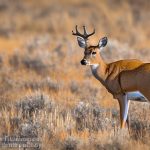
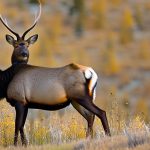
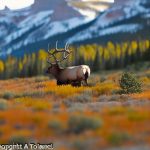
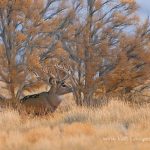
Leave a Reply